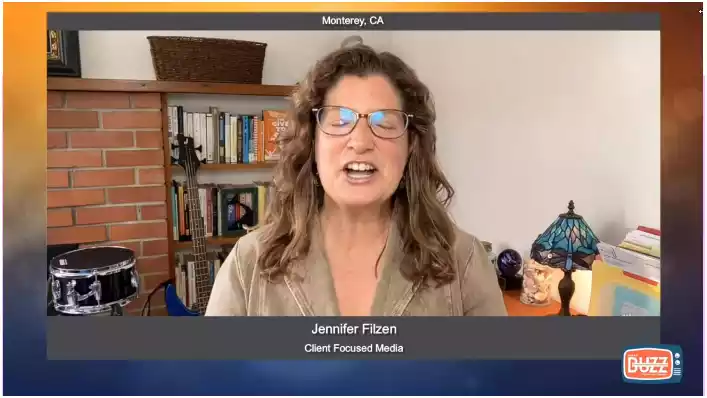Boost Your Prior Authorization Workflow Efficiency | Tips & Tricks!
Unlock the secrets to a smoother, faster prior authorization workflow efficiency! Dive into our expert tips to optimize your workflow and save valuable time and resources.

Understanding what does getting prior authorization mean is about knowing it’s a process where healthcare providers must obtain approval from a patient’s insurance before proceeding with a treatment or prescribing medication.
Curious about prior authorization? Click here to learn more about the process!
Table of Contents
Improving Prior Authorization Workflow Efficiency in Healthcare

In the complex healthcare ecosystem, prior authorizations are gatekeepers between patients and their needed treatments. As a check within the healthcare insurance system, prior authorization can impact patient care, provider workload, and the overall efficiency of medical services.
However, amidst rising scrutiny, it’s become increasingly clear that improving the workflow efficiency of prior authorizations is not just preferred; it’s essential.
What is Prior Authorization?
Prior authorization is a requirement for certain drugs or medical services, where approval from the patient’s insurance company must be obtained before the service is rendered. This process ensures that the prescribed patient’s insurance policy will pay for the necessary medical care. While this process is meant to control healthcare costs and prevent unnecessary spending, it often introduces additional steps in patient care workflows. These additional steps can lead to delays in care, frustration for patients and providers, and increased administrative burden.
The Impact on Patients
Prior authorizations can have a significant impact on patient care. Delays in approval can postpone necessary treatments, leading to the potential worsening of health conditions. This may be particularly important for individuals with chronic illnesses or acute medical needs. Furthermore, prior authorizations’ added complexity and uncertainty can cause confusion and stress for patients already dealing with health concerns. In some cases, patients may be unable to afford medication or treatment not covered by their insurance, leaving them without access to potentially life-saving care.
The Impact on Providers
The administrative burden of prior authorizations often falls on healthcare providers, who are already overwhelmed with their patient caseload and other administrative tasks. Prior authorization can be time-consuming and complex, requiring extensive documentation and communication with insurance companies. This can take valuable time away from direct patient care and lead to burnout for healthcare providers.
Improving Workflow Efficiency
Given the impact on patients and providers, it’s clear that improving the workflow efficiency of prior authorizations is crucial. Here are a few steps that can be taken to streamline the process and make it more efficient:
- Automate: Utilize technology such as electronic health records (EHRs) and pre-authorization software to automate the process and reduce manual paperwork.
- Standardize: Establish standardized protocols for prior authorizations to reduce variability and eliminate confusion for patients and providers.
- Collaborate Foster communication and collaboration between healthcare providers, insurance companies, and pharmacies to streamline the process and prevent delays.
- Educate: Educate patients about the prior authorization process, including potential delays, so they are prepared and have realistic expectations. This can lessen annoyance and perplexity for patients.
- Advocate: Advocate for changes in the healthcare system that prioritize patient care and provider workload, such as reducing the number of medications or services that require prior authorization.
We can pave the way toward a more efficient prior authorization workflow by implementing these steps. This will benefit patients and providers and contribute to a more sustainable and effective healthcare system.
I'm very thankful for Portiva who I know is looking after my practice while I'm gone the virtual assistants can manage prescription refills, documents they can triage patients and just kind of answer administrative questions and they can handle a lot on their own. But also, they're very good about contacting me if there's any emergency or anything I need to attend to. So I'm very thankful for Portiva they can help almost any provider almost anywhere and it really allows for some good work-life balance as I'm getting to experience right now at my family farm so I'm very thankful for Portiva and I'm very happy to use their services"

Board Certified Family Medicine Physician

Portiva's Virtual Medical Assistant - I have all the support I need. There's somebody checking my email, any patient messages. Patients are still able to schedule and handle any scheduling issues and any kind of billing that needs to still go through. Portiva hands handles it all for me. I have support i have somebody that I can access 24/7 pretty much. It's all very seamless. If somebody has an emergency or needs a medication called in. I know that the va's at portiva will handle that for me.

Board Certified Family Medicine Physician

Challenges in Prior Authorization Workflow

The roadblocks in the prior authorization journey are all too familiar for healthcare providers and patients alike:
- The lengthy process and administrative burden accompanying manual prior authorization submissions can lead to operational bottlenecks.
- Lack of standardization and transparency often results in confusion and delays, as each insurance company may have intricate policies and procedures.
- Ultimately, this can lead to delays in patient care, affecting outcomes and increasing anxiety for patients waiting for approvals.
- Inefficient communication between payers and providers increases frustration, increasing rework and administrative costs.
As healthcare organizations continue their quest for efficient workflows, prior authorization improvements are often at the top of their agenda. Here’s a road map to help guide you on this journey:
- Utilize Electronic Prior Authorization (ePA)
Implementing ePA solutions can significantly streamline the prior authorization process by reducing manual work, eliminating paper forms, and automating decision-making. As a result, providers can expect quicker responses, improved accuracy, and fewer claims denials.
- Leverage Real-Time Benefit Check (RTBC)
Incorporating RTBC into the electronic health record system can help providers identify alternatives to treatments that require prior authorization and obtain an instant estimate of patient out-of-pocket costs for a specific medication. This saves time and improves transparency, allowing patients to make informed decisions about their care.
- Prior Authorization Decision Support
Integrating decision support resources with the electronic health record system can help providers determine if a prior authorization is required for a specific treatment and streamline the submission process by auto-populating information from patient charts, reducing errors, and speeding up approvals.
- Standardize Processes
Creating standard processes and workflows for prior authorizations within an organization can help reduce confusion, delays, and administrative burdens. Additionally, standardization can also improve communication and collaboration between payers and providers.
Conclusion
The importance of prior authorization in the healthcare insurance system impacts patient care, provider workload, and overall efficiency. Healthcare organizations must prioritize improving the workflow efficiency of prior authorizations to ensure timely access to necessary treatments for patients. By implementing electronic solutions, leveraging real-time benefit checks, and standardizing processes, organizations can pave the way to faster and more effective healthcare. Let’s work together towards a streamlined prior authorization process that benefits all stakeholders in the healthcare ecosystem.
To learn more about medication access that can enhance your medical practice. Discover more about Portiva and unlock a world of possibilities by visiting our homepage today!
- Prior authorization in patient access services
- The impact of precertification services
- Reducing preauthorization costs
- Prior authorization challenges
- Obtaining prior authorization with ease
- Eliminate precertification denials
- Prior authorization guide
- Importance of prior authorization training
- Optimized prior authorization strategies
- Prior authorization support
- Why prior authorization training is crucial in healthcare
- The advantages of prior authorization support
- Maximizing prior authorization
- Prior authorization policy changes
- How outsourcing preauthorization works
- Solutions to precertification challenges
- Prior authorization services
- Prior authorization cost-benefit
- Prior authorization and patient care


